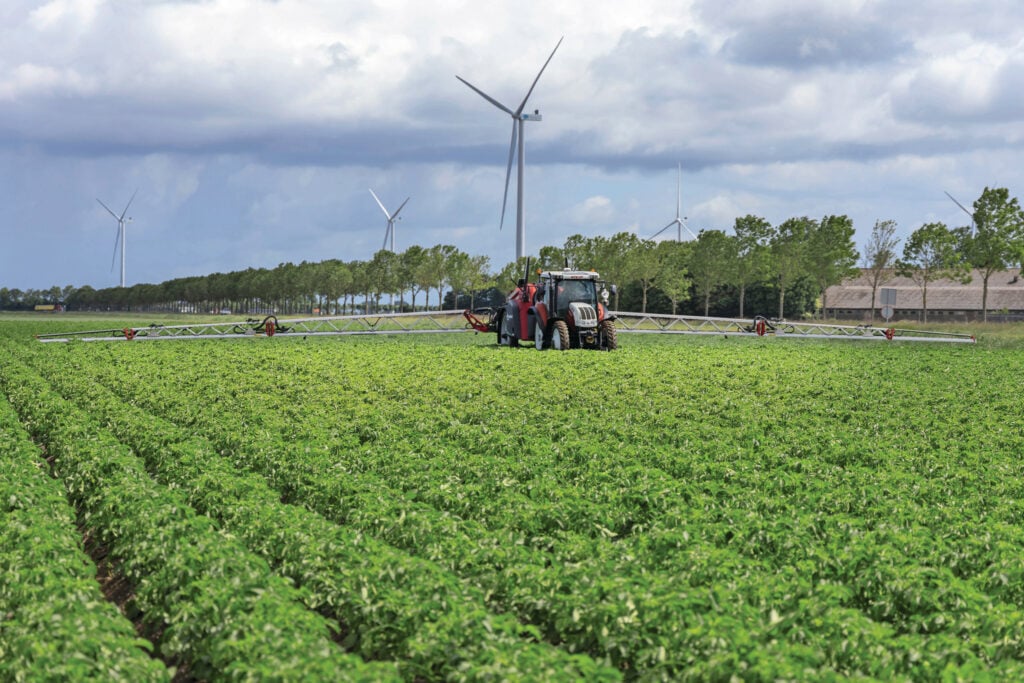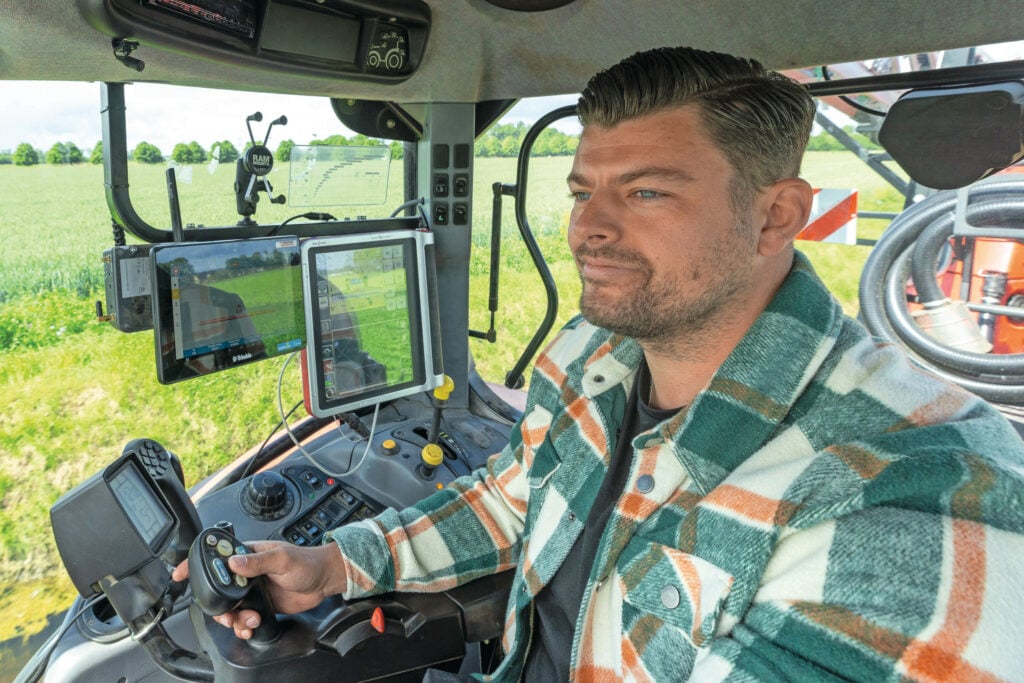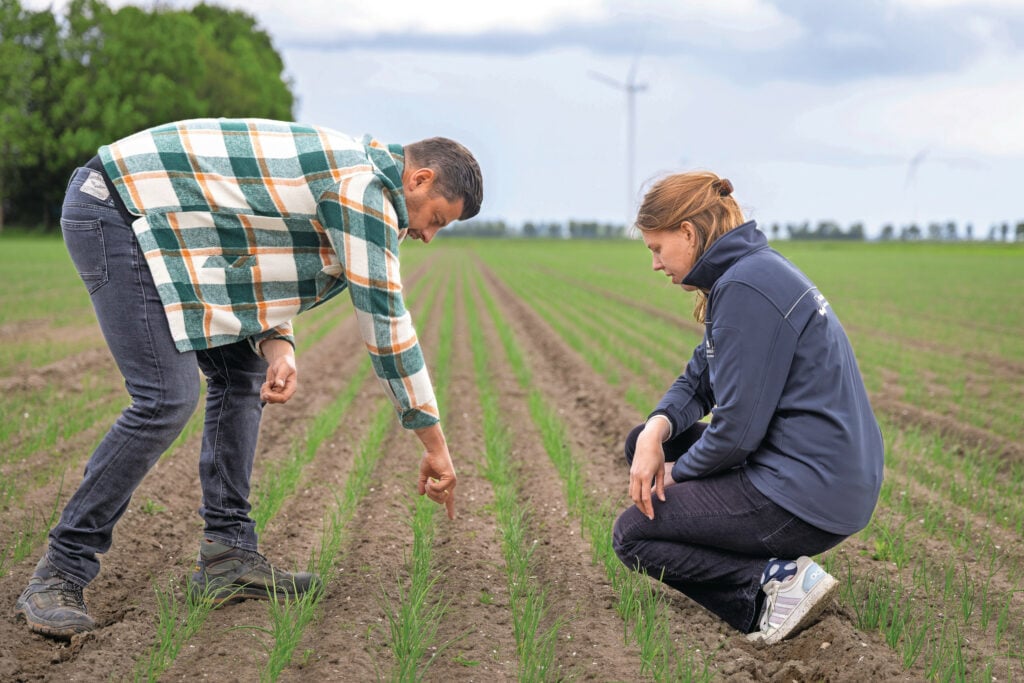Even smaller farmers can save with a modern sprayer – if they have the expertise

Frans Meerse invested in a modern Kverneland iXTrack T4 sprayer to apply chemicals more precisely and efficiently across his 32 hectares of arable crops. He now aims to take site-specific applications even further – but that requires additional knowledge and guidance.
Frans Meerse is not your average arable farmer. His farm is relatively small, totalling 32 hectares. In addition, Meerse works 4 days a week off-farm as a team and programme leader for the Agribusiness & Food programme at Aeres University of Applied Sciences in Dronten. “To generate a full income from the farm, I would need to significantly expand the acreage,” he says. “I have considered this, but it turned out to be unfeasible due to high land prices and limited land availability.”
Meerse therefore chose to combine the arable farm with an external job. “This allows me to keep my week varied and enjoyable. Working with different colleagues and being able to incorporate practical insights into education make this combination valuable. Since my work is not tied to a fixed schedule, I also have the flexibility to be present on the farm whenever needed or important.”

Efficient machinery
Despite the relatively small scale of the business, Meerse, who farms on light loam soil, operates a highly modern fleet of machinery. In recent years, he has invested in a new field sprayer, fertiliser spreader, plough, and seed drill. “I attach great value to quality, up-to-date machinery. Since I also work off-farm, I do not have a lot of time to carry out all the operations. A modern machine fleet offers more reliability and reduces the risk of downtime. In recent years, I have been able to renew a large part of my machinery.”

Seeking improvement
Last year, Meerse acquired a new Kverneland iXtrack T4 field sprayer. The spray nozzles are spaced 25 cm apart and can be individually switched on or off.
“I cannot vary the dosage per nozzle, but I can switch each nozzle on or off separately,” says Meerse, who already had the required GPS technology. “The sprayer also supports spot spraying.”
Last year, the farmer already experimented with site-specific crop protection. At Agritechnica, he came into contact with a company that creates prescription maps using drone images. “This visualises the location of weeds, allowing for targeted control using spot spraying. I trialled this with couch grass in potatoes. It worked fairly well, but there is room for improvement, especially since the prescription maps were not sufficiently accurate last year.”
‘Through site-specific crop protection, I hope to reduce pesticide usage, cut costs, and increase yields’
This motivated Meerse to enrol in the NPPL programme. “I want to make the most of the site-specific capabilities of my sprayer to reduce crop protection product usage, lower costs, and boost yields. Of course, I could explore this on my own, but being part of NPPL provides extra motivation and a helpful push.”

Focus on grasses
This year, Meerse is working on site-specific crop protection under the guidance of NPPL expert Sophie Wildeboer. “With spot spraying, we are currently focusing on grass weeds in onions and sugar beet,” says Meerse. “Products for grass control tend to be relatively expensive, so this offers the most cost-saving potential. Grasses are also easy to distinguish from the crop plants. Moreover, the herbicides we use against grasses do not negatively impact crop development. So if something does go wrong, there is no major issue.”
Once he masters the spot spraying technique, Meerse wants to use it to control other weeds as well. “Think of thistles and ragwort. The contact herbicides we currently apply across the whole field can result in stunted growth. By working site-specifically, we hope to reduce such negative effects and improve yields.
Reducing active ingredients
In addition to spot spraying based on prescription maps, Meerse is also trialling site-specific spraying without maps. Wildeboer pointed out this possibility to him. “The fact that I can switch nozzles individually allows me to activate only those that spray directly over the crop. We have already tested this in potatoes using foliar fertilisers and fungicides against Phytophthora. Normally, we spray with 3 nozzles per row, but switching one off still gives sufficient coverage of the potato plant. This way, you can easily reduce crop protection use by one-third until the crop canopy closes. This approach might also reduce insecticide use in sugar beet.”
Meerse also hopes to reduce the total amount of active substances used through better site-specific application. “With ‘On the way to PlanetProof’ and buyers setting strict limits on active ingredient levels, site-specific techniques offer extra room to manoeuvre. They give more flexibility to intervene or make corrections when it is truly necessary.”



